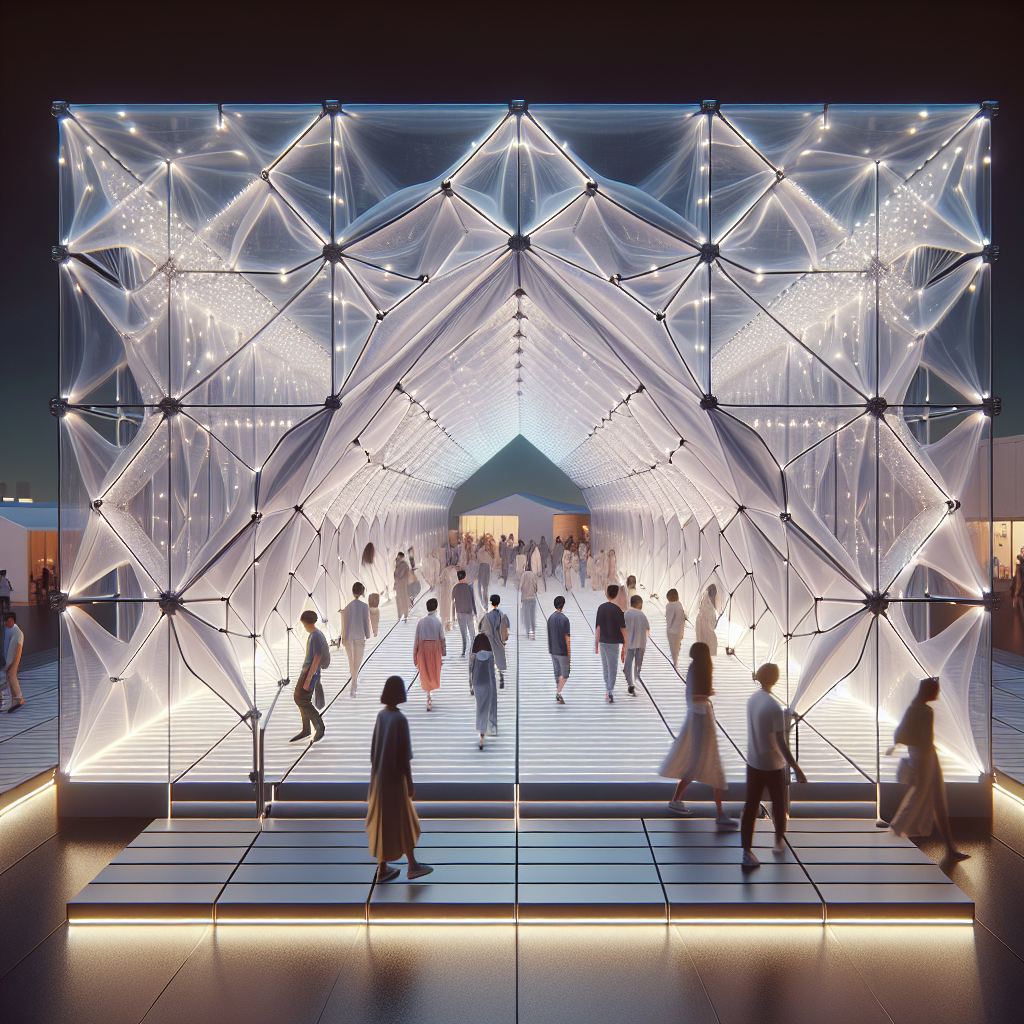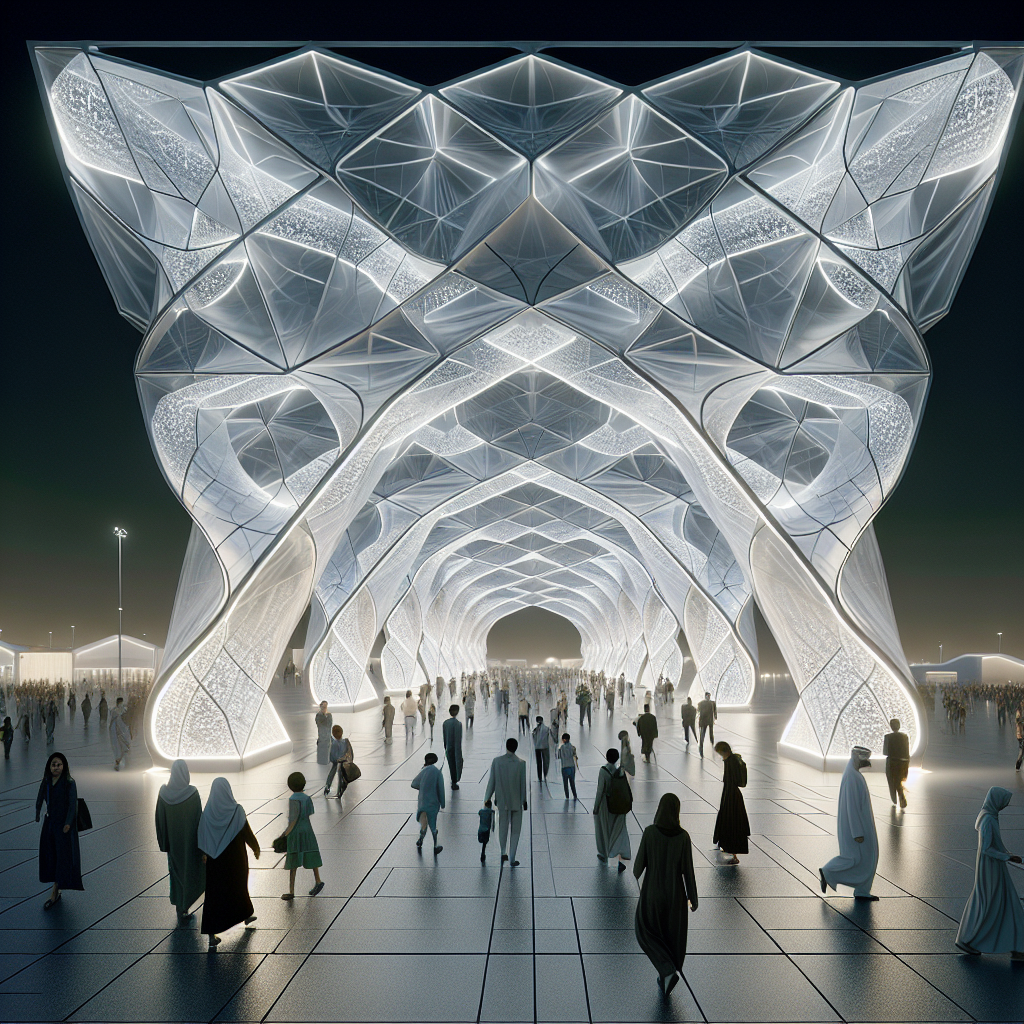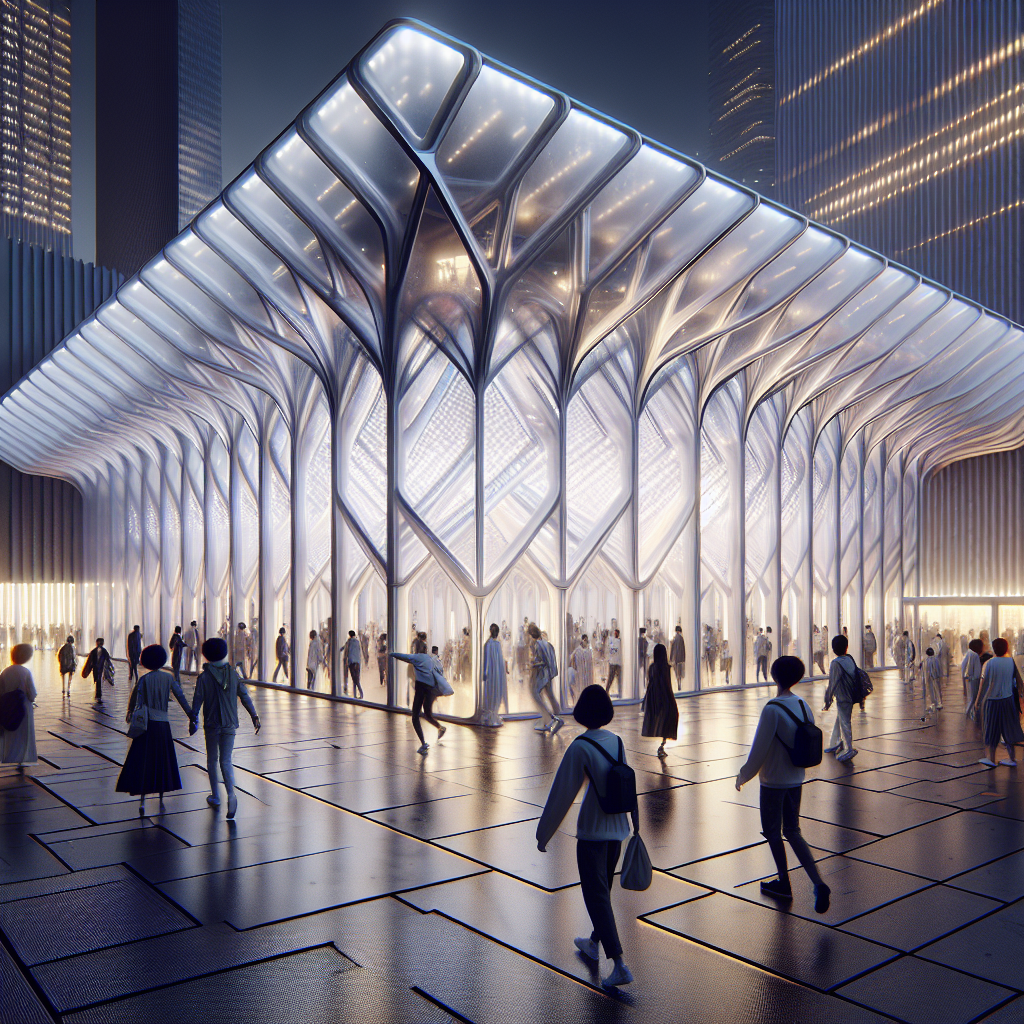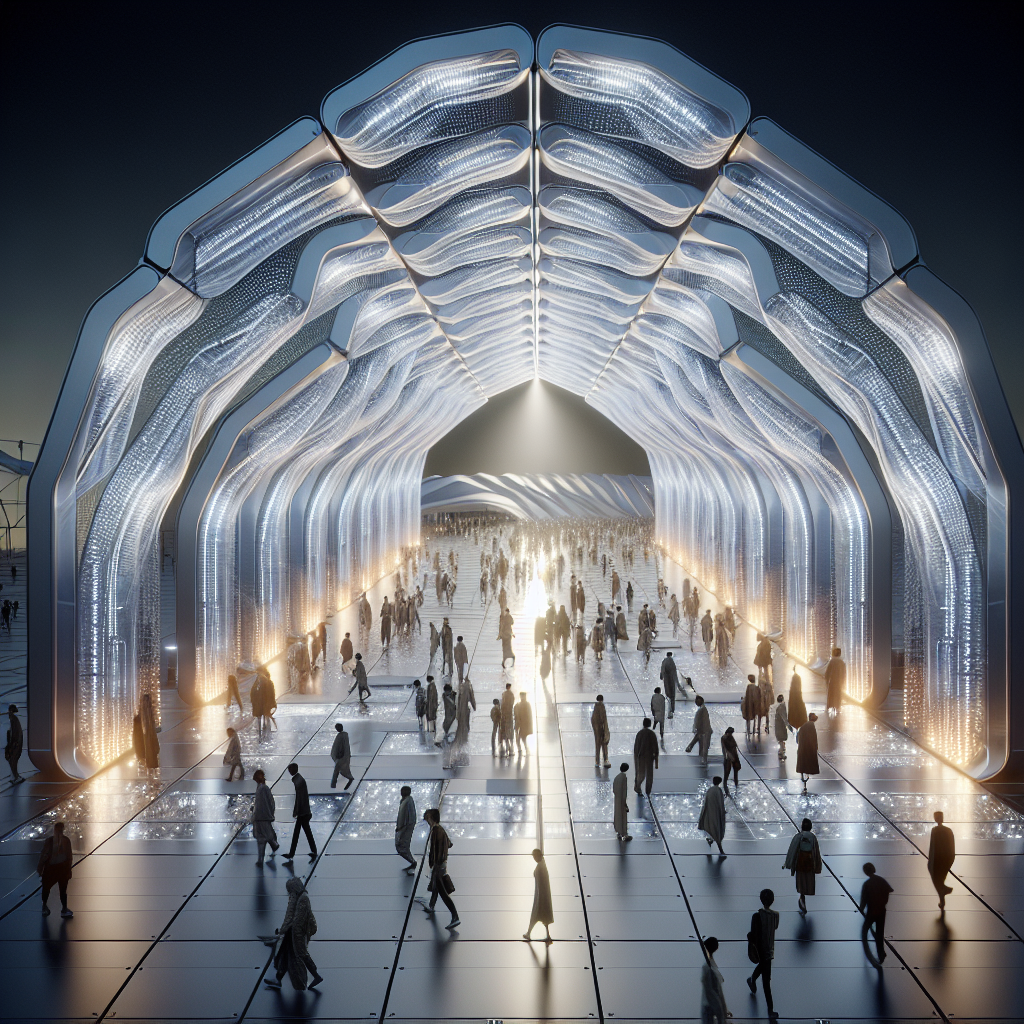Foldable ephemeral corridors: collapsible transitions for mobile events

Foldable Ephemeral Corridors: Collapsible Transitions for Mobile Events
In the fluid world of contemporary architecture and event design, foldable ephemeral corridors have emerged as a poetic intersection between mobility, adaptability, and spatial storytelling. These collapsible transitions—temporary passageways that can be assembled, disassembled, and reconfigured within hours—are redefining how designers choreograph movement and experience in transient environments. From nomadic exhibitions to mobile festivals and modular pavilions, the corridor is no longer a static connector but a dynamic architectural instrument capable of transforming the rhythm of space itself.
The Rise of the Ephemeral in Contemporary Architecture
Ephemeral architecture has long been associated with the fleeting beauty of temporary installations—from the tensile structures of Frei Otto to the bamboo pavilions of Kengo Kuma. Yet, in the last decade, the field has expanded beyond aesthetic experimentation into a realm of functional mobility. The global shift toward modular design and sustainable event infrastructure has accelerated this evolution, with architects and engineers seeking lightweight, reusable systems that minimize waste and maximize flexibility.
According to a 2024 report by the World Design Organization, the demand for modular and temporary event structures has grown by over 35% in the past five years, driven by sustainability mandates and the experiential economy. Foldable corridors—often fabricated from composite textiles, recycled aluminum, or bioplastic membranes—fit seamlessly into this paradigm. They embody a philosophy of architecture as movement, where form follows not only function but also temporality.
Designing for Transition: The Corridor as Experience
Traditionally, corridors have been perceived as neutral spaces—mere conduits between destinations. In the context of mobile events, they become experiential thresholds. Designers are now treating these temporary passageways as immersive environments that can modulate light, sound, and texture to evoke emotion and anticipation.
Imagine entering a collapsible tunnel lined with semi-translucent mylar panels that shimmer with projected patterns, echoing the fluidity of a desert mirage. The floor, made of interlocking recycled rubber tiles, flexes slightly underfoot, producing a tactile rhythm that guides visitors forward. Overhead, a lightweight aluminum skeleton folds like origami, creating a sequence of expanding and contracting volumes that mimic breathing. This choreography of compression and release transforms a simple transition into a sensorial narrative.
Architectural collectives such as Atelier Nomade and Studio Drift have explored similar ideas in their recent installations, where kinetic structures respond to human presence through motion sensors and adaptive lighting. These designs echo the principles of responsive architecture, emphasizing interaction and impermanence over permanence and solidity.
Material Innovation and Structural Intelligence
The success of foldable ephemeral corridors lies in their material intelligence. Advances in digital fabrication and lightweight composites have enabled the creation of structures that are both resilient and remarkably portable. Carbon-fiber rods, tensioned fabrics, and origami-inspired joints allow for rapid deployment without heavy machinery, making them ideal for urban pop-ups, cultural festivals, and emergency installations.
One notable example is the “TransFold Pavilion” developed by the Spanish design studio MAPA, unveiled at the 2024 Venice Architecture Biennale. Constructed from laser-cut aluminum ribs and stretchable ETFE membranes, the pavilion’s corridors could be collapsed into a single crate and reassembled in under two hours. The structure’s joints, inspired by the anatomy of insect wings, allowed for both rigidity and flexibility—demonstrating how biomimicry can inform temporary architecture with remarkable efficiency.
Similarly, research at the MIT Media Lab has explored “programmable matter” for adaptive structures—materials that can alter their shape in response to environmental stimuli. Such innovations could soon enable corridors that expand or contract automatically based on crowd density or temperature, merging architecture with responsive technology.
Mobility, Sustainability, and the Circular Event Economy
Foldable ephemeral corridors align with the growing emphasis on circular design and sustainable event infrastructure. By prioritizing reusability and low-impact materials, these structures challenge the wasteful legacy of one-off event construction. Their modular nature allows components to be repurposed across multiple events, reducing both cost and carbon footprint.
This approach resonates with the principles discussed in zero-waste architecture, where every element is designed for disassembly and reuse. In the context of mobile events—whether art fairs, music festivals, or corporate showcases—foldable corridors become the connective tissue of a sustainable ecosystem. They embody a new kind of architectural responsibility: one that values adaptability over monumentality.
Moreover, the logistics of mobility are reshaping the aesthetics of these corridors. Designers are experimenting with flat-pack systems that can fit into standard shipping containers, integrating solar-powered lighting and embedded sensors for energy efficiency. Some prototypes even feature photovoltaic fabrics that generate electricity during daylight hours, transforming the corridor into a self-sustaining micro-environment.
Spatial Storytelling in Motion
Beyond their technical ingenuity, foldable ephemeral corridors serve as instruments of spatial storytelling. They guide, frame, and pace the visitor’s journey, acting as temporal sequences that punctuate the rhythm of an event. The corridor becomes a cinematic device—compressing time, revealing glimpses, and orchestrating suspense.
At the 2025 Salone del Mobile in Milan, several exhibitors employed collapsible corridors as narrative devices. One installation by the Dutch collective Overtone featured a serpentine tunnel made of mirrored panels that distorted reflections as visitors moved through. The structure, illuminated by programmable LEDs, shifted color temperature in sync with ambient sound, creating a synesthetic experience that blurred the boundary between architecture and performance.
This fusion of light, sound, and motion recalls the immersive principles explored in interactive installations, where architecture becomes a medium for participation rather than observation. The corridor, once overlooked, is now a stage for sensory engagement and emotional resonance.
From Nomadism to Networked Spaces
The emergence of foldable ephemeral corridors reflects a broader cultural shift toward nomadic architecture—a response to global mobility, digital culture, and environmental urgency. As cities host increasingly transient events, from pop-up galleries to mobile clinics, the need for adaptable connective spaces grows exponentially. These corridors act as both physical and symbolic bridges, linking temporary communities and ephemeral experiences.
Architectural theorists have drawn parallels between these structures and the concept of “networked space” in contemporary urbanism, where mobility and connectivity define spatial identity. In this sense, foldable corridors are not merely transitional—they are transitional architectures, embodying the spirit of impermanence that defines our era.
They also echo the aesthetic sensibilities of collapsible living structures, where mobility is not a constraint but a design philosophy. The corridor, in its foldable form, becomes a metaphor for adaptability—a space that breathes, folds, and unfolds in rhythm with human movement and environmental flux.
Looking Ahead: The Future of Collapsible Transitions
As we move deeper into an age of climate-conscious design and hybrid cultural experiences, the role of foldable ephemeral corridors will likely expand. They may soon integrate augmented reality overlays, biometric sensors, or AI-driven lighting systems that respond to emotional cues. The convergence of artificial intelligence in architecture and kinetic engineering could lead to corridors that choreograph themselves—adjusting geometry, acoustics, and illumination in real time.
In this unfolding narrative, the corridor is no longer a passive space between destinations. It is a living interface—an architectural gesture that celebrates impermanence, interaction, and the art of transition. As cities and events become more fluid, these collapsible pathways remind us that architecture’s greatest power may lie not in permanence, but in its ability to move with us.
Foldable ephemeral corridors encapsulate the ethos of our time: flexible, sustainable, and profoundly human. They invite us to walk not just through space, but through the evolving story of design itself.








